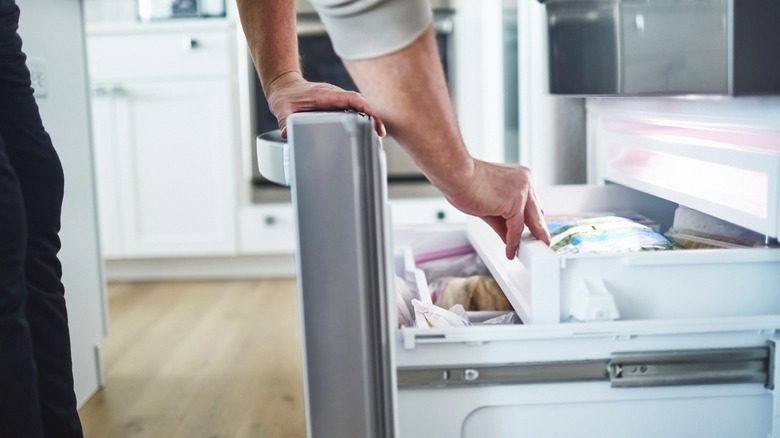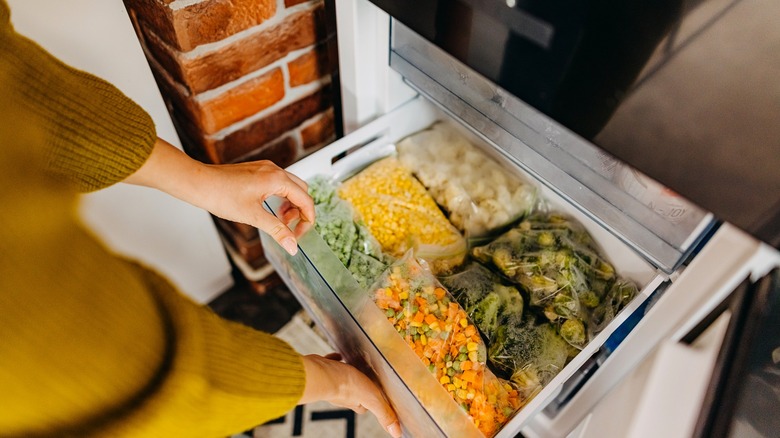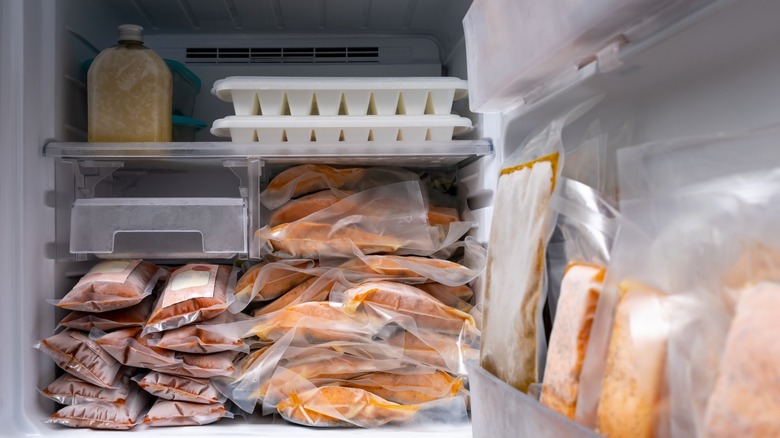Keeping Your Freezer Too Empty Ravages Frozen Food Quality
You may have already correctly assumed that overstocking a freezer is probably not the best idea, but did you know that not keeping enough food stored is just as destructive? That's because freezers need a little help from the inside in order to maintain consistent temperatures. Without enough cold items on the inside, the heat that enters a freezer when someone opens the door will start subtly melting its contents.
That's because, as part of the entire refrigerator cooling system, freezers work by filtering out warm air through a liquid refrigerant. You can feel this process in motion if you've ever touched your fridge and noticed that it was warm.That's because thermal energy, which increases when heat makes molecules speed up their movement, usually spreads to colder temperatures. The refrigerator system pushes this energy out to protect the food inside from heating up. However, every time the freezer is exposed to room temperature air when the door is opened, the system must work harder to push the resulting thermal energy out.
Not too much, not too little
The technology behind refrigerators is a modern marvel, and there's a reason why the invention of the freezer revolutionized the way we eat food. However, that doesn't mean that the more traditional methods of storing food with a hunk of ice have disappeared. If you've ever used a cooler during an outdoor cookout, you know how simple yet effective a well-insulated chamber and a couple of bags of ice can be. The same goes for a household freezer, which works much more efficiently if it has enough frozen material on the inside.
Of course, packing a freezer too full has its disadvantages, too. This can prevent cold air from moving freely and evenly inside, while also blocking air vents and potentially causing a breakdown in the coolant system. In both an overstuffed and under-packed freezer, the motor needs to work harder to cool down the food, meaning that a consistent temperature becomes nigh-impossible to maintain. The sweet spot is about ¾ full, just enough to keep the inside cool and protected from warm air when opening the door.
How to properly pack an empty freezer
But wait! You don't want to store food in the freezer just for the sake of keeping everything else cold. Obviously, you eventually want to eat whatever you're freezing, but then you might be left with a freezer that's too empty. Fret not, for this is an easy fix that has roots in the ice boxes of pre-electric times. It just requires literally packing the empty parts of your freezer with bags of ice, the same way you would fit them inside a portable cooler. This conveniently happens to be a handy way to check the temperature of the freezer, as well. If you see the ice start to melt, you probably need to add more to lower the temperature of your freezer.
If you don't want to buy a bag of ice that you may not need after you acquire enough food to take up the remaining space in your freezer, you can always use reusable ice packs. Keep in mind that you won't be using them to try to cure the headache you'll get if your freezer ever breaks down. If you're really in a pinch, you can even put a container of water in there. It'll eventually freeze into a block of ice, and if it doesn't, you know that something is very wrong with your fridge.



